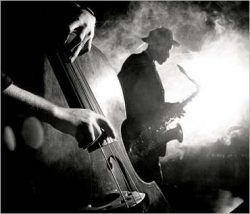Getting Around New Orleans
Most New Orleans neighborhoods are laid out like grids but the normal east-west-north-south orientation just does not apply.
For example, “Uptown” is in the southwest part of the city, and “Downtown” is in the southeast. The city is big. You’re not going to be able to walk from end to end and even crossing some individual neighborhoods is a trek so taxis and Ubers are a must. A map is a must too, but even with one, it can be confusing.
Here’s what you need to know:
1. New Orleans lies between Lake Pontchartrain and the Mississippi River. As a visitor, you’re going spend your time in the neighborhoods close to the river.
2. Historically, the big dividing line is Canal Street.
In the old days what was left of Canal was the American side and what was right was the French side. No one talks about it this way now, but it’s a very helpful distinction.
Right side of Canal you’ll find the older neighborhoods like the French Quarter, the Marigny, the Bywater, Treme, and the Upper and Lower Ninth Wards.
Left side of Canal you’ll find the modern city with big office buildings and residential neighborhoods developed after the Americans took possession of the city like the Central Business District (CBD), the Warehouse District, the Garden District, Uptown, the Irish Channel, and Carrollton.
3. The core of the city is a crescent, a half-circle, thus its nickname the Crescent City. From a getting-around-town perspective, I’ve always thought it’s best described as a half spiderweb.
What this means in practical terms is if you are trying to get from a part of the city was left of Canal like Uptown or Carrollton to one that is right of Canal like the Bywater following the roads along the river – the fat part of the web – is the longest way to go. Better to go up one of the boulevards to Broad Avenue or Claiborne and across town that way (the short way) and then down the boulevard that best takes you to the neighborhood you want to go to.
This may make no sense, but if for some reason you are doing your own driving in the city and have to make this trip often, you’ll thank me for this gas and time-saving “Obvious Adams” trick (which is not so obvious).
4. Street names change when they cross Canal.
Magazine on the “American” side becomes Decateur on the “French” side. Camp becomes Chartres. St. Charles becomes Royal. Carondelet becomes Bourbon. Baronne becomes Dauphine. O’Keefe becomes Burgundy.
Rampart is called S. Rampart left of Canal and N. Rampart to the right of it.
5. Major boundary roads for traveler neighborhoods include:
On the “French” side:
* Rampart – Divides the French Quarter from Treme
* Esplanade – Divides the French Quarter from the Marigny
* Franklin Ave – Just beyond St. Roche and Elysian Fields is the beginning of the Bywater
On the “American” side:
* Strictly speaking, the area between Jackson and Louisiana is the Garden District but along Magazine and St. Charles, there is a lot of action, too.
* From Louisiana to Carrollton is Uptown. It’s a big area and the major boulevards are Napoleon, Jefferson, and Carrollton which like Canal, Esplanade, and Franklin run to the river.
This geographic “cheat sheet” along with a halfway decent map will save you a lot of time and trouble.
When you get an address, the questions you want to answer are: a) what neighborhood it is in and b) what avenue or boulevard is it near. This will help orient you fast.
Click here to return to: Audio, Video and Text References
– Ken McCarthy
Jazz on the Tube
P.S. Our unique programming is made possible by help from people like you. Learn how you can contribute to our efforts here: Support Jazz on the Tube
Thanks.


